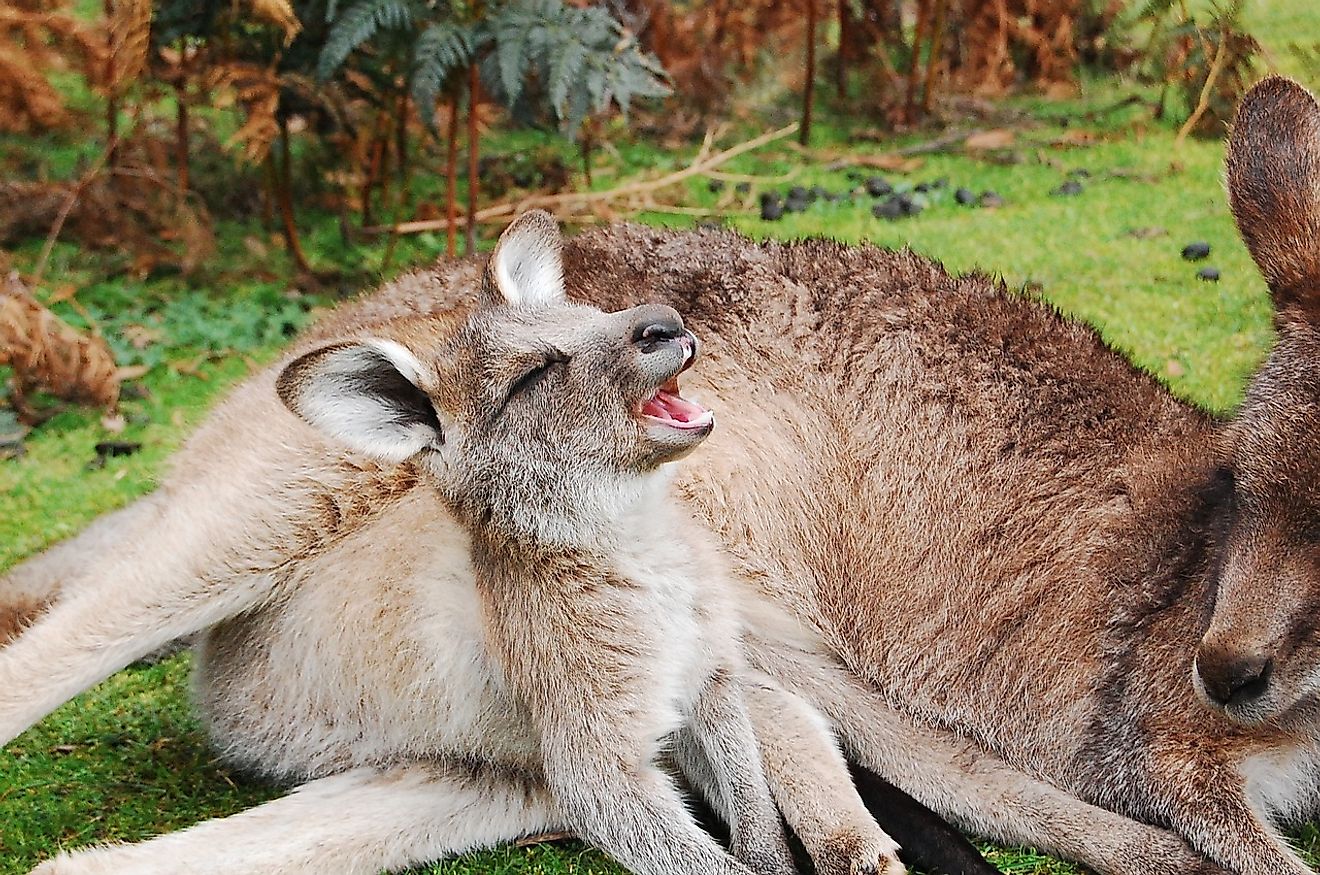Kangaroo Facts: Animals of Oceania

5. Physical Description
While there is a good deal of variance in appearance between kangaroo species, all kangaroos have muscular tails, strong back legs, large feet, short and velvety fur, and long, pointed ears. As marsupials, Female kangaroos share a distinct feature that sets them apart from placental and monotreme mammals. They have pouches that contain mammary glands for their babies to live in until old enough to emerge. The size of kangaroos vary greatly among species. The red kangaroo weighs around 200 pounds, and is more than 5 feet tall. Red Kangaroos are the largest of all marsupials, whereas the smallest kangaroo, the musky kangaroo, weighs only 12 ounces and stands only 6 to 8 inches in height.
4. Diet
All Kangaroos are grazing herbivores, in the sense that their diet mainly consists of grasses, flowers, leaves, and ferns, but they will sometimes eat moss and insects as well. Their diet varies considerably according to species. For example, the easter grey kangaroo is predominantly a grazer, eating a wide variety of grasses, whereas the red kangaroo also includes significant amount of shrubs in their diets, making them more of a "browser". Just like cows, kangaroos have chambered stomaches that enable them to regurgitate their food and re-chew it, before it is ready to be totally digested.
3. Habitat and Range
Kangaroos live in varied habitats, ranging from forests and woodland areas to grassy plains and savannahs. They can be found throughout much of the Australian continent and the outlying island of Tasmania. Although they prefer sparsely wooded or open shady plains, they can also adapt to arid desert weather by conserving water and vegetation. Because of their adaptability, most kangaroo species are thriving. They are not as severely impacted by human activities and climate change as many other species, although in times of drought their numbers often decline due to the diminishment of their food supplies. They are currently classified as a species of "Least Concern" by the International Union for Conservation of Nature's Red List of Threatened Species.
2. Behavior
Most kangaroos are social animals, in that they live and travel in organized groups called "mobs", which are dominated by the largest males, in order to groom and protect one another from danger. Because of their long feet, kangaroos cannot walk normally and prefer to use hopping as their primary means of locomotion. Because its hind legs and feet are much stronger and larger than their forelimbs, in order to move at slow speeds, a kangaroo has to move its tail to form a tripod with its two forelimbs, and then raises its hind feet forward. Male kangaroos are highly competitive and aggressive with one another, especially when it comes to contesting for females, and they will often wage battles over access to potential mates. This fighting is said to closely resemble humans boxing.
1. Reproduction
After winning access to a female, a male kangaroo will be the one to initiate sexual activity. Female kangaroos give birth to usually only one baby at a time, which usually occurs between late spring and early summer, after being pregnant for 21 to 38 days. Newborn kangaroos, which are called "joeys", weigh as little as 0.03 ounces, and span between 0.2 and 0.9 inches at the time of birth. After birth, a joey will crawl into its mother's pouch in order to be nursed and continue to grow and develop for another 120 to 450 days. Inside the pouch, the joey is protected and fed as it nurses from its mother's nipples. In relation to other large mammals, Joeys grow quickly, reaching full maturity at 14 to 20 months for females, between 2 and 4 years of age for males.











